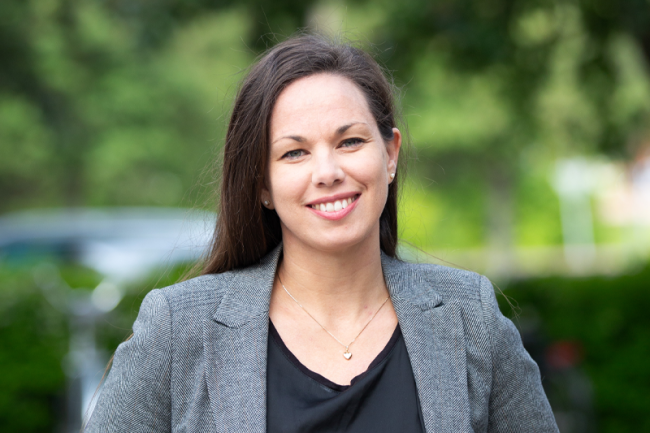New research shows low level of knowledge about disabilities within organisations
2025-08-26According to the Public Health Agency, approximately 20 percent of the Swedish population has some form of disability. Suzanne Millmark, doctoral student at Karlstad Business School, has conducted research on the inclusion of employees with disabilities when working from home.
– Based on my work experience and academic background in psychology, public health and work, it felt like a natural and interesting area to study. I didn’t expect the level of knowledge about disabilities to be so low, says Suzanne.
Can you tell us about your key findings?
– The first study is a case study based on a specific municipality, where it was interesting to gain different perspectives on inclusion. At the intersection of gender, disabilities and working from home, it became apparent that certain norms existed which employees made an effort to live up to, in order not to deviate from the perceived ideal norm. By working from home, the employees were able to work productively without the distracting sensory input of the office environment. They also found it easier to manage their disabilities at home and, in some cases, to hide them from their colleagues. However, when disabilities are hidden and there is a lack of understanding in this area, inclusion becomes dependent on how well you fit the norm. This means that employees had to address their need for adjustments on an individual level, instead of the organisational level.
– The second study focuses on HR’s work with identifying what facilitates and hinders the inclusion of employees with disabilities. The results showed that disabilities were rarely a prioritised issue. The knowledge and understanding of disabilities needed to be improved and HR officers found invisible disabilities particularly challenging to manage. Limited organisational resources, negative attitudes and hidden challenges further complicated efforts towards inclusion. Factors that supported inclusion included knowledge about disabilities, soft skills and promoting an open and respectful workplace culture.
In your research, you talk about different forms of stigma – could you give a few examples?
– There may be social perceptions that people with disabilities are less capable, which can create barriers in working life and affect how individuals are viewed and treated. Stigmatisation can lead to discrimination and exclusion. When there are strong norms that are based on notions that fully functioning bodies and minds are the ideal within an organisation, employees with disabilities make an effort not to appear different from the rest of their colleagues. In such cases, HR officers and managers have a responsibility to address the norms, negative attitudes and stigma that may exist within the organisation.
Do you think there are many people who refrain from disclosing their disabilities?
– Yes, I do. According to the Public Health Agency, approximately 20 percent of the Swedish population has some form of disability. If we assume that every class or group includes individuals with disabilities, it becomes clear that efforts to promote inclusion and improve accessibility would benefit a lot of people – not only those who have openly shared their disability, but also those who have not yet received a formal diagnosis or disclosed their disability. Efforts towards inclusion would also benefit those without any disabilities.
In what ways does this become a problem both for the individual and for the organisation?
– When employees with disabilities don’t share their challenges and needs, it can result in them carrying a heavy burden alone in addition to their regular work tasks. The individual will not receive the support they need and are entitled to. Stress and sick leave are major issues in many organisations, and for the organisation, it’s important that employees feel good, enjoy their work and receive the support they need in order to be productive and remain within the organisation.
What is the role of the HR office in situations like these?
– HR plays a key role, where it’s important to have knowledge about disabilities, work adjustments and inclusion in order to support managers in their efforts towards inclusion. The HR office can work both strategically and operationally by shaping inclusive policies, providing training and raising awareness. HR can also identify needs, create inclusive routines, challenge norms and ensure that work adjustments and accessibility are in place.
In what ways do you think your research can contribute?
– I hope my research can raise awareness about disabilities. I’m excited that we have been able to introduce lectures on disabilities into the bachelor’s programme in human resource management and working life at Karlstad University, to raise awareness and improve competence among future HR professionals. We will also be offering a course through contract education for HR staff. By raising the discussion in both research and practice, I hope we can contribute to more inclusive organisations and, ultimately, a more inclusive society.
Did you discover anything that you would like to investigate further?
– Yes, one interesting area to explore further is how collaboration between managers and HR officers works when it comes to inclusion efforts. There appears to be a gap between managers and HR, where some parts of information and communication don’t always work smoothly. I also want to delve deeper into how managers with disabilities view inclusion. Some of the managers who took part in the study have disabilities, which was very interesting to learn about and deserves more attention in research.



